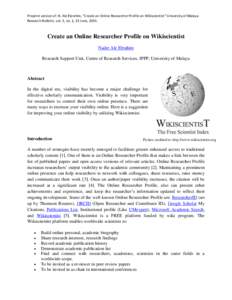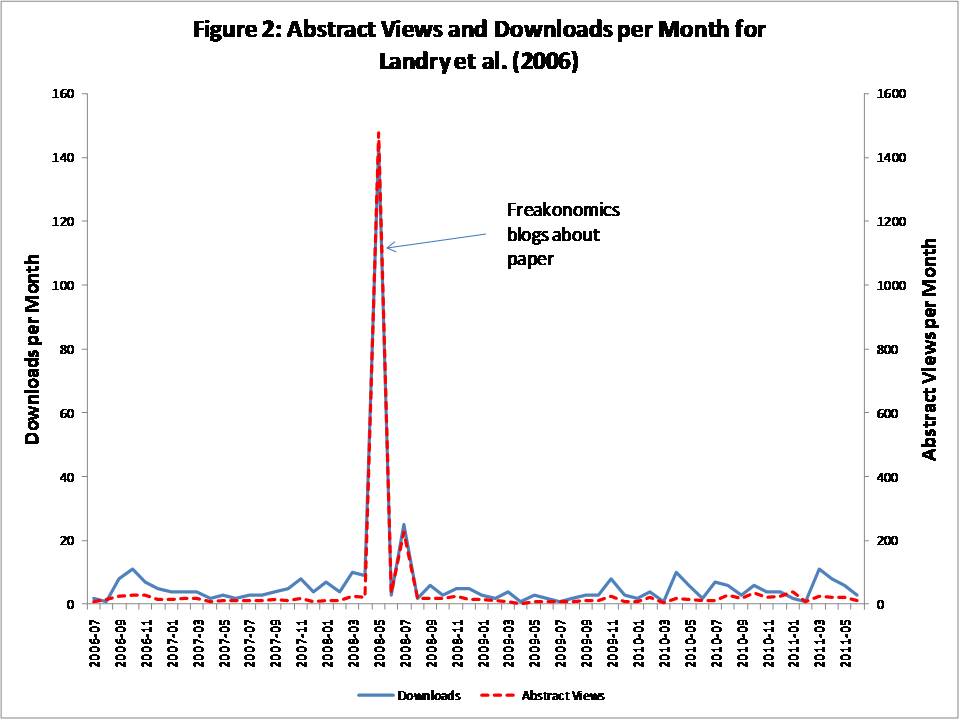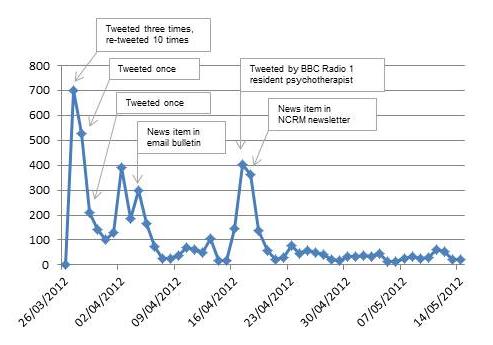Electron Physician. 2014 Apr-Jun; 6(2): 814–815.
Published online 2014 May 10. doi: 10.14661/2014.814-815
PMCID: PMC4324277
Citation Frequency and Ethical Issue
Dear Editor:
I read your publication ethics issue on “bogus impact factors” with great interest (1).
I would like to initiate a new trend in manipulating the citation
counts. There are several ethical approaches to increase the number of
citations for a published paper (2). However, it is apparent that some manipulation of the number of citations is occurring (3, 4). Self-citations, “those in which the authors cite their own works” account for a significant portion of all citations (5).
With the advent of information technology, it is easy to identify
unusual trends for citations in a paper or a journal. A web application
to calculate the single publication h-index based on (6) is available online (7, 8). A tool developed by Francisco Couto (9)
can measure authors’ citation impact by excluding the self-citations.
Self-citation is ethical when it is a necessity. Nevertheless, there is a
threshold for self-citations. Thomson Reuters’ resource, known as the
Web of Science (WoS) and currently lists journal impact factors,
considers self-citation to be acceptable up to a rate of 20%; anything
over that is considered suspect (10).
In some journals, even 5% is considered to be a high rate of
self-citations. The ‘Journal Citation Report’ is a reliable source for
checking the acceptable level of self-citation in any field of study.
The Public Policy Group of the London School of Economics (LSE)
published a handbook for “Maximizing the Impacts of Your Research” and
described self-citation rates across different groups of disciplines,
indicating that they vary up to 40% (11).
I would like to initiate a new trend in manipulating the citation
counts. There are several ethical approaches to increase the number of
citations for a published paper (2). However, it is apparent that some manipulation of the number of citations is occurring (3, 4). Self-citations, “those in which the authors cite their own works” account for a significant portion of all citations (5).
With the advent of information technology, it is easy to identify
unusual trends for citations in a paper or a journal. A web application
to calculate the single publication h-index based on (6) is available online (7, 8). A tool developed by Francisco Couto (9)
can measure authors’ citation impact by excluding the self-citations.
Self-citation is ethical when it is a necessity. Nevertheless, there is a
threshold for self-citations. Thomson Reuters’ resource, known as the
Web of Science (WoS) and currently lists journal impact factors,
considers self-citation to be acceptable up to a rate of 20%; anything
over that is considered suspect (10).
In some journals, even 5% is considered to be a high rate of
self-citations. The ‘Journal Citation Report’ is a reliable source for
checking the acceptable level of self-citation in any field of study.
The Public Policy Group of the London School of Economics (LSE)
published a handbook for “Maximizing the Impacts of Your Research” and
described self-citation rates across different groups of disciplines,
indicating that they vary up to 40% (11).
Unfortunately,
there is no significant penalty for the most frequent self-citers, and
the effect of self-citation remains positive even for very high rates of
self-citation (5). However, WoS has dropped some journals from its database because of untrue trends in the citations (4).
The same policy also should be applied for the most frequent
self-citers. The ethics of publications should be adhered to by those
who wish to conduct research and publish their findings.
there is no significant penalty for the most frequent self-citers, and
the effect of self-citation remains positive even for very high rates of
self-citation (5). However, WoS has dropped some journals from its database because of untrue trends in the citations (4).
The same policy also should be applied for the most frequent
self-citers. The ethics of publications should be adhered to by those
who wish to conduct research and publish their findings.
References
1. Jalalian M, Mahboobi H. New corruption detected: Bogus impact factors compiled by fake organizations. Electron Physician. 2013;5(3):685–6. doi: 10.14661/2014.685-686. [Cross Ref]
2. Ale
Ebrahim N, Salehi H, Embi MA, Habibi Tanha F, Gholizadeh H, Motahar SM,
et al. Effective Strategies for Increasing Citation Frequency. International Education Studies. 2013;6(11):93–9. doi: 10.5539/ies.v6n11p93. http://opendepot.org/1869/1/30366-105857-1-PB.pdf. [Cross Ref]
Ebrahim N, Salehi H, Embi MA, Habibi Tanha F, Gholizadeh H, Motahar SM,
et al. Effective Strategies for Increasing Citation Frequency. International Education Studies. 2013;6(11):93–9. doi: 10.5539/ies.v6n11p93. http://opendepot.org/1869/1/30366-105857-1-PB.pdf. [Cross Ref]
3. Mahian O, Wongwises S. Is it Ethical for Journals to Request Self-citation? Sci Eng Ethics. 2014:1–3. doi: 10.1007/s11948-014-9540-1. [PubMed] [Cross Ref]
4. Van Noorden R. Brazilian citation scheme outed. Nature. 2013;500:510–1. doi: 10.1038/500510a. http://boletim.sbq.org.br/anexos/Braziliancitationscheme.pdf. [PubMed] [Cross Ref]
5. Fowler JH, Aksnes DW. Does self-citation pay? Scientometrics. 2007;72(3):427–37. doi: 10.1007/s11192-007-1777-2. [Cross Ref]
6. Schubert A. Using the h-index for assessing single publications. Scientometrics. 2009;78(3):559–65. doi: 10.1007/s11192-008-2208-3. [Cross Ref]
7. Thor
A, Bornmann L. The calculation of the single publication h index and
related performance measures: a web application based on Google Scholar
data. Online Inform Rev. 2011;35(2):291–300.
A, Bornmann L. The calculation of the single publication h index and
related performance measures: a web application based on Google Scholar
data. Online Inform Rev. 2011;35(2):291–300.
8. Thor
A, Bornmann L. Web application to calculate the single publication h
index (and further metrics) based on Google Scholar 2011 [cited 2014 3
May]. Available from: http://labs.dbs.uni-leipzig.de/gsh/
A, Bornmann L. Web application to calculate the single publication h
index (and further metrics) based on Google Scholar 2011 [cited 2014 3
May]. Available from: http://labs.dbs.uni-leipzig.de/gsh/
9. Couto F. Citation Impact Discerning Self-citations 2013 [cited 2014 3 Ma]. Available from: http://cids.fc.ul.pt/cids_2_3/index.php.
10. Epstein D. Impact factor manipulation. The Write Stuff. 2007;16(3):133–4.
11. Public Policy Group L. Maximizing the impacts of your research: a handbook for social scientists. London School of Economics and Political Science; London, UK.: 2011. http://www.lse.ac.uk/government/research/resgroups/lsepublicpolicy/docs/lse_impact_handbook_april_2011.pdf.
Citation Frequency and Ethical Issue




 Source:
Source:  Source:
Source: 





